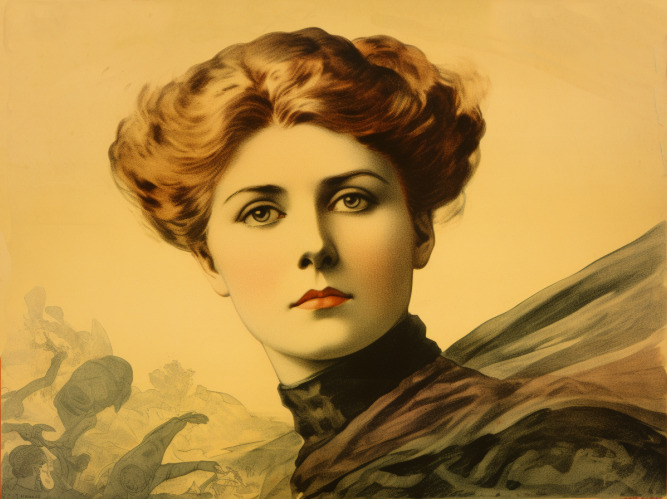You can find a PDF of this lesson plan here.
Lesson Overview
Featured article: Heroes of Progress, Pt. 27: Kate Sheppard by Alexander C.R. Hammond
In this lesson, students will learn about the extraordinary life of Kate Sheppard, the inspirational suffragist whose tireless work and petitioning of New Zealand’s parliament in the latter half of the 19th century is largely credited for the nation becoming the first country in the world to grant women the right to vote in 1893.
Warm-up
Watch this short video about Kate Sheppard’s activism. In partners, small groups, or as a whole class, have students respond to the following questions:
- What did you learn about Kate Sheppard from the video?
- How does this short video make you feel?
- If you could ask Kate Sheppard one question about her political activities, what would it be?
Do you know what is meant by “temperance?” Read the first page of this article and describe the aims of the temperance movement in a one-sentence description.
Questions for reading, writing, and discussion
Read the article, then answer the following questions:
- What was the content of the first petition submitted by Sheppard to the New Zealand parliament?
- What was the takeaway lesson for Sheppard when that first petition failed to gain the votes needed to pass?
- Why do you think the mass petition was the political tool used by Sheppard rather than other forms of political protest such as boycotts or strikes?
- What established political institutions and democratic norms were present in New Zealand that allowed for the petition to be an effective means of activism?
- What is the connection between Sheppard’s political activities and the temperance movement?
- A vibrant civil society in New Zealand was necessary for Sheppard’s success. Fill in the chart below to record the leadership positions held by Sheppard in different non-governmental institutions.
| Sheppard’s leadership role in the organization | Sheppard’s activities in the organization | |
| Trinity Ladies’ Association | ||
| International Woman’s Christian Temperance Union (WCTU) | ||
| WCTU’s journal The White Ribbon |
- What have been some of the global consequences of Sheppard’s work for women’s suffrage? Describe at least three impacts that you think are the most important.
Extension Activity/Homework
Examine a primary source
Read Sheppard’s pamphlet Ten Reasons Why the Women of New Zealand Should Vote (1888). Then answer the following questions:
- Which specific Enlightenment idea is evident in reason #1? Think critically and use yourbackground knowledge. The idea is not overtly stated.
- What is the practical argument for female suffrage that Sheppard puts forth in reason #4?
- Make an inference. Which social practices were prevalent in a British settler colony, such as New Zealand, that would have made women “less accessible to the debasing influences now brought to bear upon elections?” Also, what were some of these “debasing influences” that had sway over male voters?
- Reason #6 refers to women’s “refining and purifying effect.” Why do you think that women were thought to have these attributes?
- What is the assumption about the social status and family role of New Zealand women that is evident in reason #8?
- In reason #9 Sheppard does not say that women and men are physical equals – quite the contrary. Who is the audience of this pamphlet and why might this line of argument persuade them?
Write a petition
What is an issue that you feel strongly about in your own school or community? Write a petition advocating for the change you wish to see. Model your petition on the structure of Sheppard’s 1893 Women’s Suffrage Petition, including:
- The addressees of the petition (the powerful people to whom you’re sending thepetition).
- One sentence outlining the credentials of the signers, such as, “We the students of______________________High School…”
- Two or three bullet points outlining the changes you wish to see implemented.
- At least one bullet point explaining the wrong that will be done if the changes arenot made.
- One sentence expressing your desire to work together for the common good and yourhope that your petition’s aims will be fulfilled. Think of your present audience as well as future generations. Craft your points to appeal to their inherent sense of justice. Be reasonable and fair. Refrain from accusatory language.
Write a country case study
New Zealand was the first country where women won the right to vote. As noted in the article, several other countries soon followed. But many nations held out for decades before giving women full voting rights.
Research the history of women’s suffrage in a country of your choice. Then write a short report noting the important figures and events pertaining to that struggle. Be sure to include prominent leaders, rights groups, and legal milestones, as well as any groups that resisted giving the franchise to women. Include images and links to videos as appropriate.

